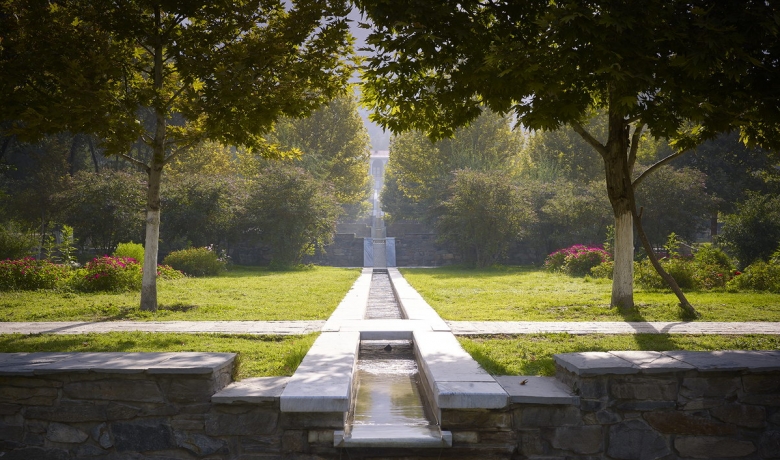AKDN’s cultural development activities are aimed at conserving and restoring Afghanistan’s cultural heritage, while stimulating local economic development and improving the quality of life for people living in surrounding neighbourhoods.
Kabul
In 2002, AKDN began the rehabilitation of Bagh-e-Babur, a walled and terraced garden containing the tomb of Babur, the founder of the Mughal Empire. AKDN’s improvements include the restoration of walls and the Queen’s Palace, the re-laying of water channels, the reconstruction of a caravanserai to provide space for a visitor’s centre, shops and offices, and the replanting of trees favoured by the Mughals. A range of community upgrading activities has also been carried out, improving water and sanitation facilities for 10,000 inhabitants of the surrounding residential area, which has been the focus of joint area-planning initiatives with Kabul Municipality.
AKDN has restored an imposing 19th-century mausoleum in central Kabul over the grave of Timur Shah, the king who made Kabul the Afghan capital in place of Kandahar. The surrounding open space has been reclaimed and landscaped to create a green park in the heart of the city.
Since 2003, war-damaged quarters of the old city of Kabul have been the focus of an AKDN programme (the Aga Khan Trust for Culture) to conserve key historic buildings, including houses, mosques, shrines and public facilities. Upgrading works have also improved living conditions for some 15,000 residents of the old city in the neighbourhoods of Asheqan wa Arefan, Chindawol and Kuche Kharabat.
aktc-afghanistan-baghebabur1144_r.jpg

- rehabilitated three public open spaces (including the on-going Chihilsitoon Garden);
- paved more than 22’000m² of pedestrian alleyways, walkways and streets;
- improved 134 houses through grants and technical advice;
- trained 5454 youth in carpentry, wood carving, masonry, traditional plastering, tailoring, embroidery, carpet and kilim weaving, horticulture and literacy;
- generated more than 915,000 workdays for skilled and unskilled labour.
For more information, please see: Restoration in Kabul.
Herat
In Herat, in western Afghanistan, a range of documentation, conservation and upgrading works has also been carried out since 2005 in surviving historic sections of the old city. This has been accompanied by supporting efforts to improve urban management and governance in the city. In addition, restoration work has been undertaken on an important Timurid shrine complex in Gazorgah, northeast of the city.
aktc-afghanistan-170043.jpg

- conserved 40 public buildings and monuments;
- paved five public open spaces rehabilitated; 35’000m² of pedestrian alleyways, walkways and streets; rehabilitated seven houses;
- improved 60 houses through grants and technical advice;
- trained 75 apprentices trained by 15 master craftsmen; trained 120 skilled labour; trained 30 youth as carpenters, masons and glass makers; and
- generated 507,000 workdays for skilled and unskilled labour.
For more information, please see: Restoration in Herat
Balkh
AKTC has also been involved in a number of revitalisation measures in Balkh, including the Noh Gumbad Mosque and the shrine of Abu Nasr Khwaja Parsa.
aktc-afghanistan-169801.jpg

- conserved12 monuments;
- rehabilitated two public open spaces;
- paved 10,000m² of pedestrian alleyways, walkways and streets;
- supported the training of 68 apprentices by 10 master craftsmen through conservation efforts;
- trained 110 men as carpenters, masons and tile makers and 47 young women in tailoring; and,
- generated 170,000 workdays for skilled and unskilled labour.
For more information, please see: Restoration in Balkh






